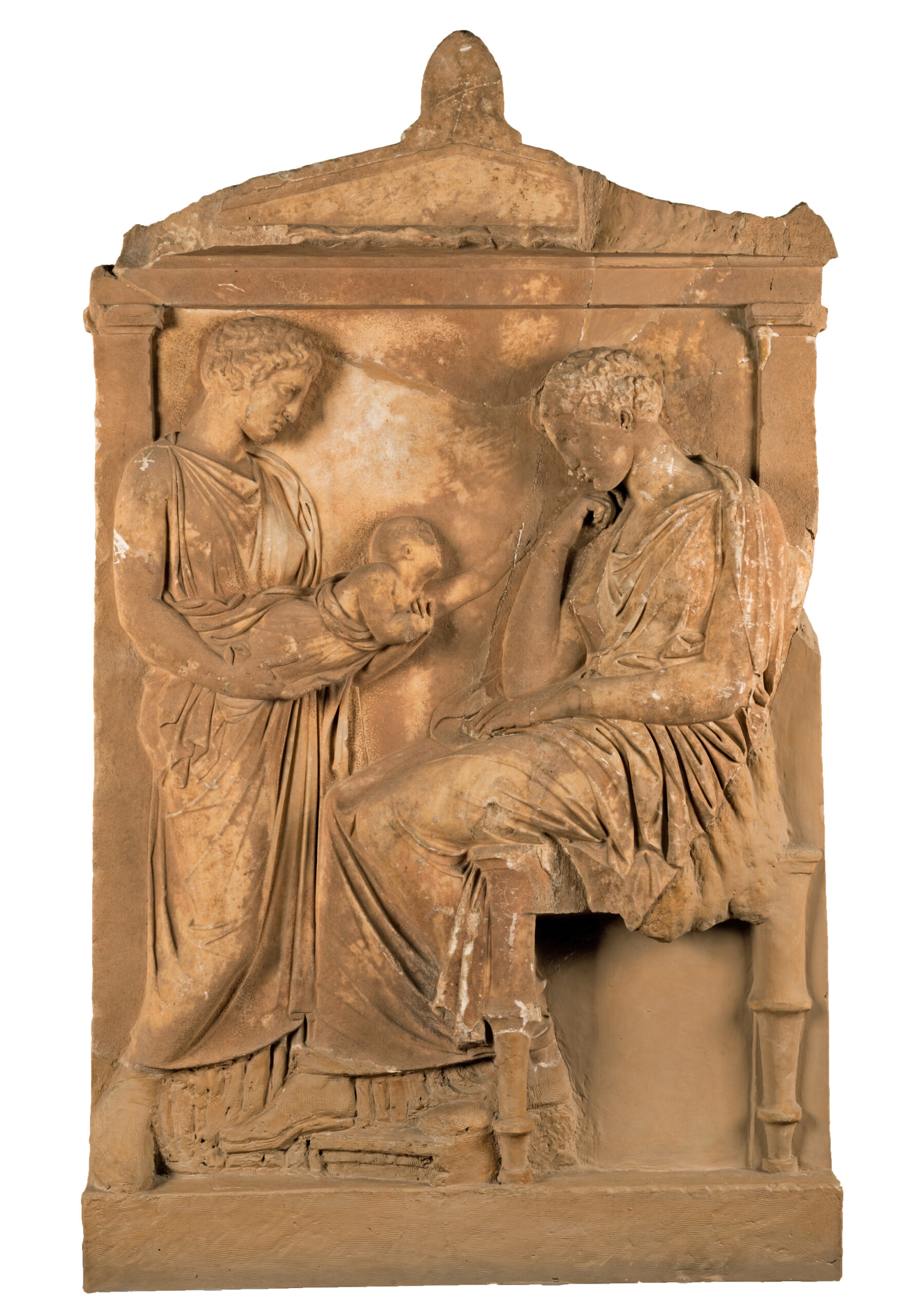Exhibit of the month
Longing for an embrace
The grave relief of Phylonoe
National Archaeological Museum,
Sculpture Collection inv. no. Γ 3790.
Provenance: Found at Psychico, Attica
Measurements: height 1,50 m., width 1,10 m.
Chronology: 370-360 BC
Display place: Room 18
The grave relief takes the form of a naiskos with a pediment. It depicts a family scene: a seated mother and a nanny or close relative holding a baby. The inscription on the epistyle leaves no doubt as to the tragic event depicted in the, otherwise, common scene. Phylonoe is the dead one. The baby stretches out his hands to her, trying in vain to touch her. The mother, with her head lowered and her hands in a closed movement isolating her from the environment, is already far away. The distance between the figures, between life and death, is now unbridgeable, even though in the relief they are only three millimeters apart from each other…
The theme of the female figure carrying a baby appears in funerary art as early as the archaic period and finds many examples in grave monuments of the late 5th and 4th centuries BC. The particularity of this specific relief, which makes it so interesting, lies in the fact that it does not depict a new-born baby in the arms of the nanny on the background as usual, thus functioning as a symbol of motherhood for the main figure. Here, an older baby is represented, trying to slip out of the nanny’s protective embrace, in a desperate attempt to hug his mother, the center of his world, for the last time. It is this desperate movement of tenderness and the longing of the baby,who has acquired entity and claims the lost embrace, that further emphasizes the dramatic and inevitable end.Much less common in funerary iconography are depictions of children as the main figures, in grave monuments erected in their own memory. These are carefree scenes that convey the untimely death, like the little Nikohares, kneeling in front of his sister, reaching out to her to catch the little bird that she offers him, on the relief erected by their parents, to whom they left great grief. On the other hand, the little Dikaios is depicted as an adult miniature, facing his father in their common monument. Although the frequent loss of children is a historical reality, given the high rate of child mortality, few are those young children who occupy a leading role in the public image of their family, as it is projected on its burial monument.
Dr. Chrysanthi Tsouli
Selected Bibliography
Ν. Kaltsas, National Archaeological Museum. The Sculpture, Athens 2001, no. 362
Chr. Clairmont, 1993. Classical Attic Tombstones, Ι, II, Kilchberg, no. 2780.
Α. Cohen, Introduction: Childhood between Past and Present, in Α. Cohen – J. Rutter (eds.), Construction of Childhood in Ancient Greece and Italy, Hesperia suppl. 41, 2007, 21-22.
On depiction of children on attic classical funerary monuments
J.-B. Grossman, Forever Young: An Investigation of the Depictions of Children on Classical Attic Funerary Reliefs, in Α. Cohen – J. Rutter (eds.), Construction of Childhood in Ancient Greece and Italy, Hesperia suppl. 41, 2007, 309-322.


